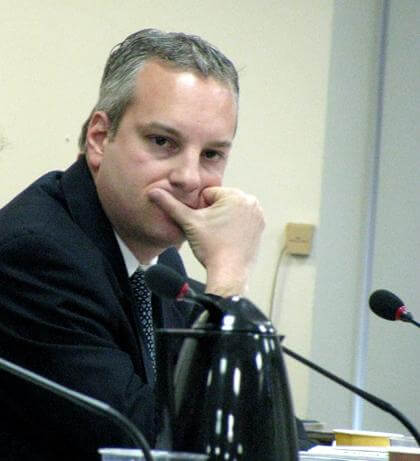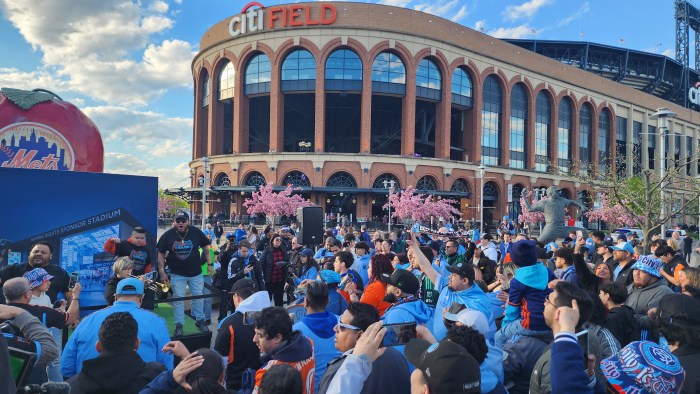By Philip Newman
Without major bailout money for the Metropolitan Transportation Authority, Queens straphangers will not only pay more, but lose two subway and many bus lines and wait longer for their rides.
That was the grim outlook presented by the MTA last week. The embattled agency is $1.2 billion in the hole and said its only choice is to charge more for less.
MTA Executive Director Elliot Sander told a board meeting last Thursday that it was “anathema” for the agency to cut service, increase fares and tolls by 23 percent and lay off early 3,000 employees.
“These cuts are harsh,” Sander said. “It’s going to be very tough.”
MTA Chairman Dale Hemmerdinger said: “We have no choice. By law we must balance the budget. We are not the federal government. We cannot print money.”
City Councilman John Liu (D−Flushing), chairman of the Council’s Transportation Committee, said the proposed cuts would bring “misery to millions.”
“It would be so detrimental in the long run for the MTA to enact the proposed service cuts that they should not be carried out. The only way we can dig out of this hole is through broad−based revenue streams.”
Whether this actually becomes reality depends on whether the MTA gets major cash by next spring. The state has serious money problems of its own, but the Ravitch Commission, appointed by Gov. David Paterson, is due to release recommendations next Friday on how to raise money for the beleaguered MTA.
Speculation has been that the commission might recommend tolls on the East River bridges, although that would require legislative approval.
If no subsidies are forthcoming, the W and Z subway lines would be eliminated as well as the following bus and train service:
• Overnight service would be eliminated on 25 low−ridership routes, including the Q30. Weekday evening service would end earlier on the Q42 andQ79.
• On Sundays, service would end earlier on the Q48 and 37 low−ridership local bus routes would be eliminated on weekends, including the Q14, Q31, Q76, Q79 and Q84.
• Weekend service would be eliminated on the Q56 and parts of the Q24. Weekday service would end on the Q26, Q56, Q74, Q75 and Q84.
• The G train would be shortened by dropping the Forest Hills service extension, the N would run by way of the Manhattan Bridge on late nights, the Q would be extended to Astoria, the M would run to Broad Street during rush hour and additional J local service would be provided.
• During non−rush hours across the system, trains would run every 10 minutes, rather than eight minutes, on the A, D, E, F, G, J, M, N, Q, and R on Saturday and the A, D, E, F, G, N, Q and R on Sundays. Trains would run every 30 minutes rather than 20 minutes between 2 a.m. and 5 a.m.
Transit experts have long contended that no mass transit system can operate only from fares, but with the proposals just announced, city subway riders would be providing 83 percent of costs. The average financial contribution mass transit riders provide nationwide is 37 percent.
The MTA has yet to specify how much subway and bus fares would go up, although the basic fare was expected to rise from $2 to $2.50. Fares on Long Island Bus lines would go up by 43 percent and on Access−a−Ride, used by the disabled, some elderly and others who cannot use subways or buses, are scheduled to rise from $2 to $4.
Fares on the Long Island Rail Road and Metro−North Railroad would also rise, along with tolls on bridges and tunnels.
The next step is a vote next month by the MTA on the final budget proposal and a series of public hearings will be scheduled in January.
Sander said that if there were no prospects for a bailout by March, the service cuts would have to start with fare increases to follow in June.
“March is short of drop−dead time,” Sander said.
More than a dozen public officials, transit advocates and citizens spoke during the public speaking period of the MTA board meeting, with several saying the fare hikes and service cuts hurt most those least able to afford them.
Manhattan Borough President Scott Stringer called for the return of the commuter tax and urged to the board to “think about dedicating the $700 million or more it would generate each year to help fund the MTA.”
MTA board member Norman Seabrook suggested what he called a “sin tax” of 30 percent on tobacco and alcohol to raise money for the MTA.
The MTA’s financial straits are largely the result of falling tax receipts and the decline of the real estate market, which had provided the transit agency with fees from real estate transactions.
But the MTA had also borrowed $22 billion to pay for its Capital Program, which includes the Second Avenue subway and the East Side Access to bring the LIRR into Grand Central Terminal.

































